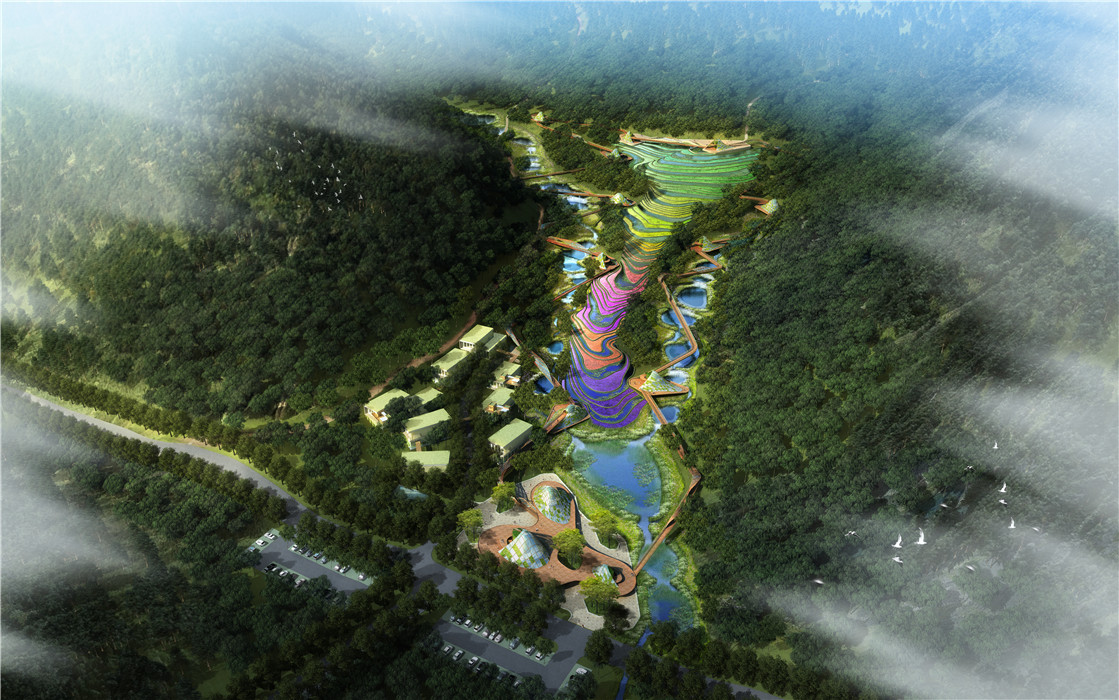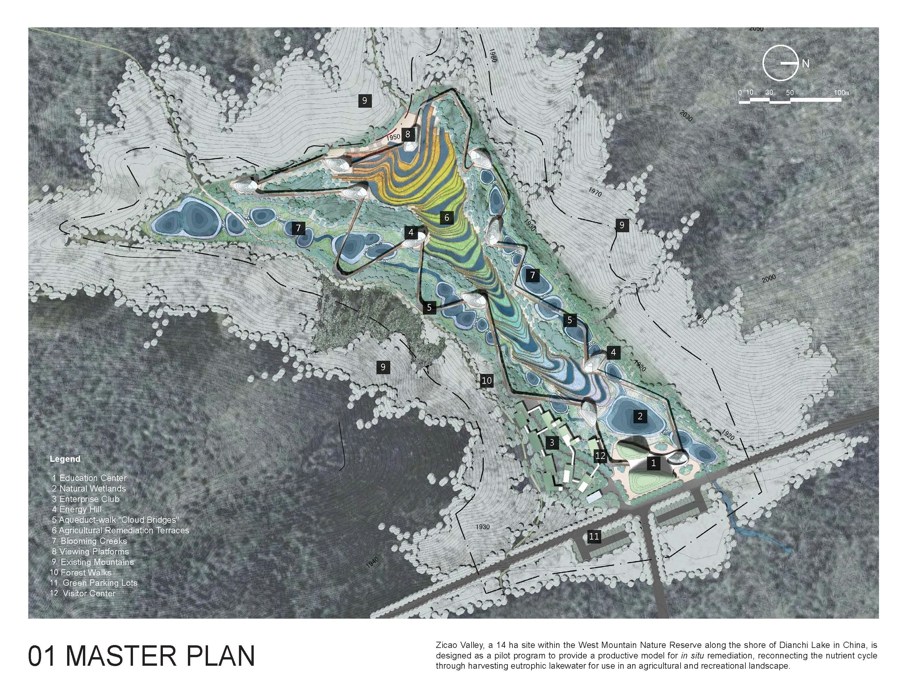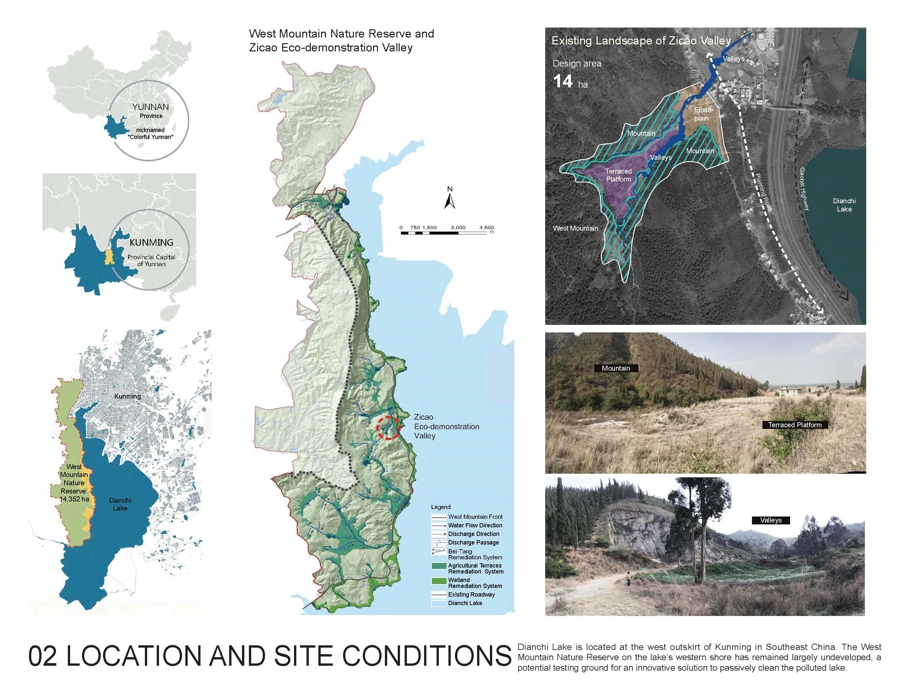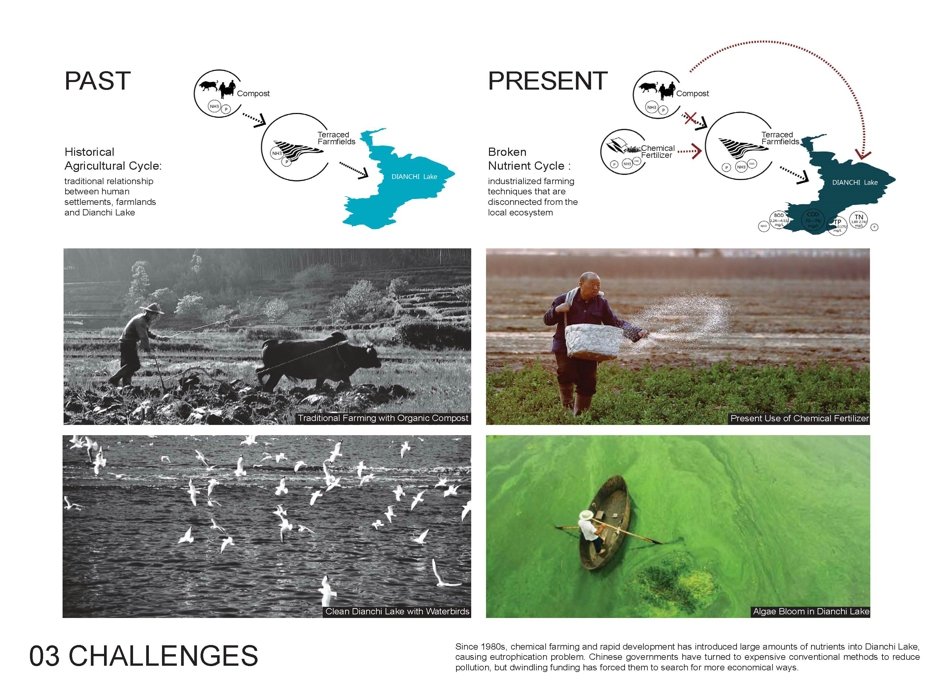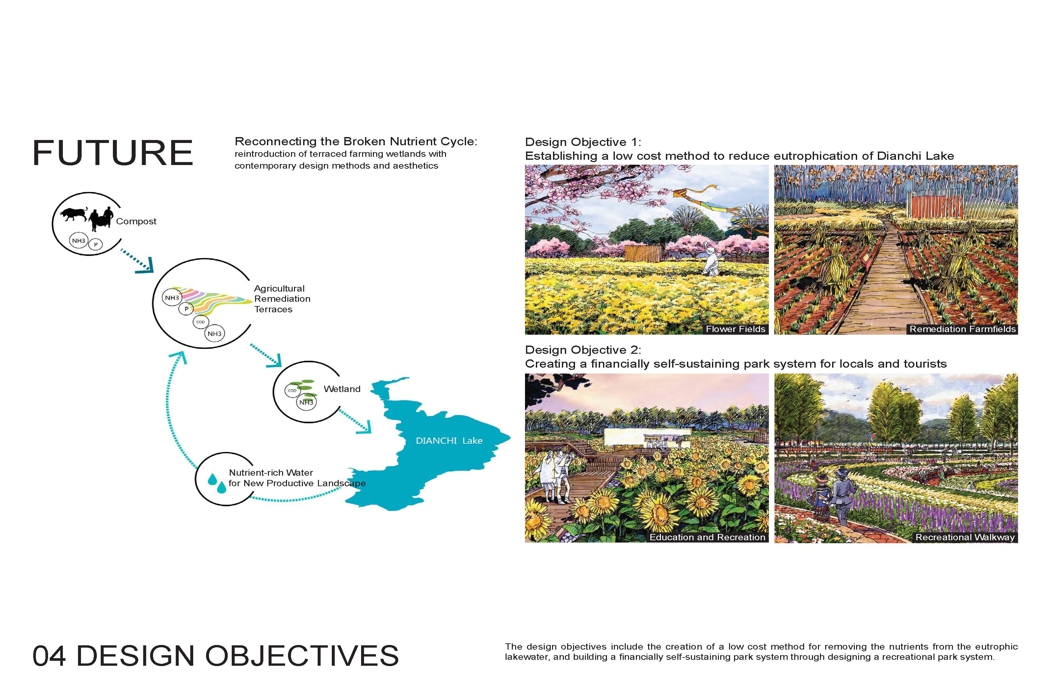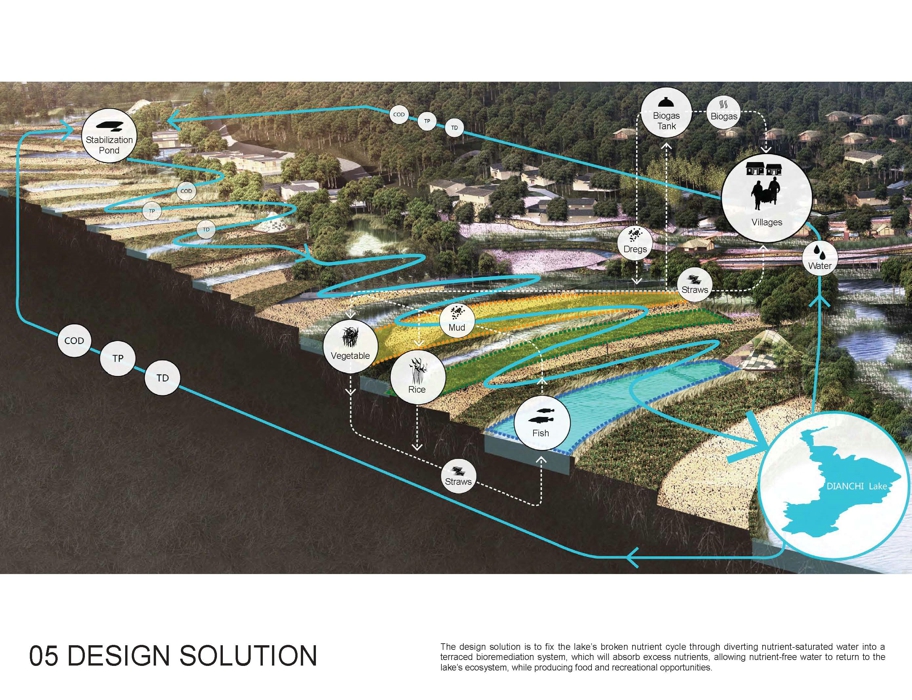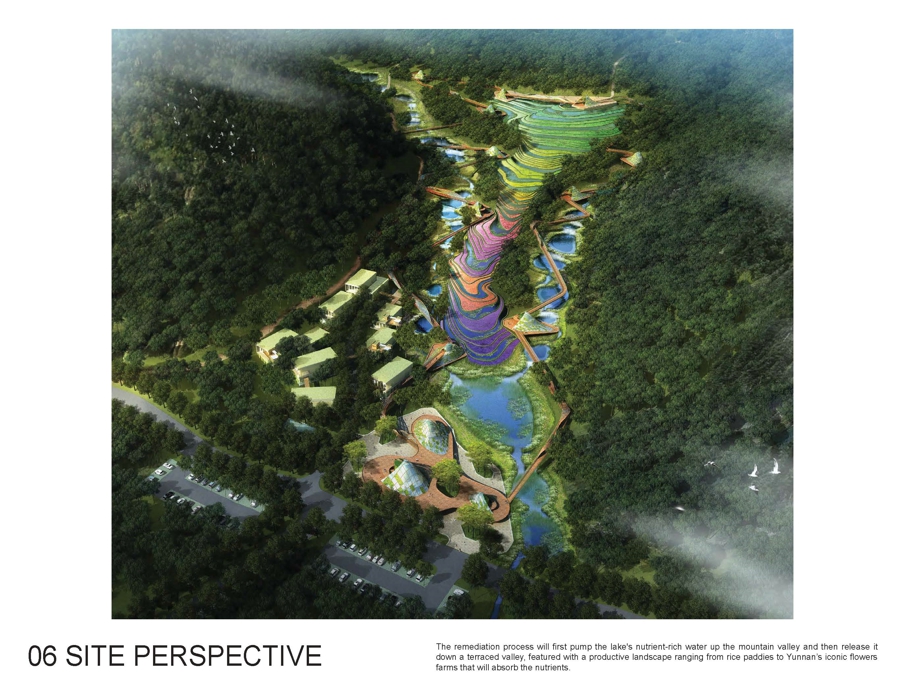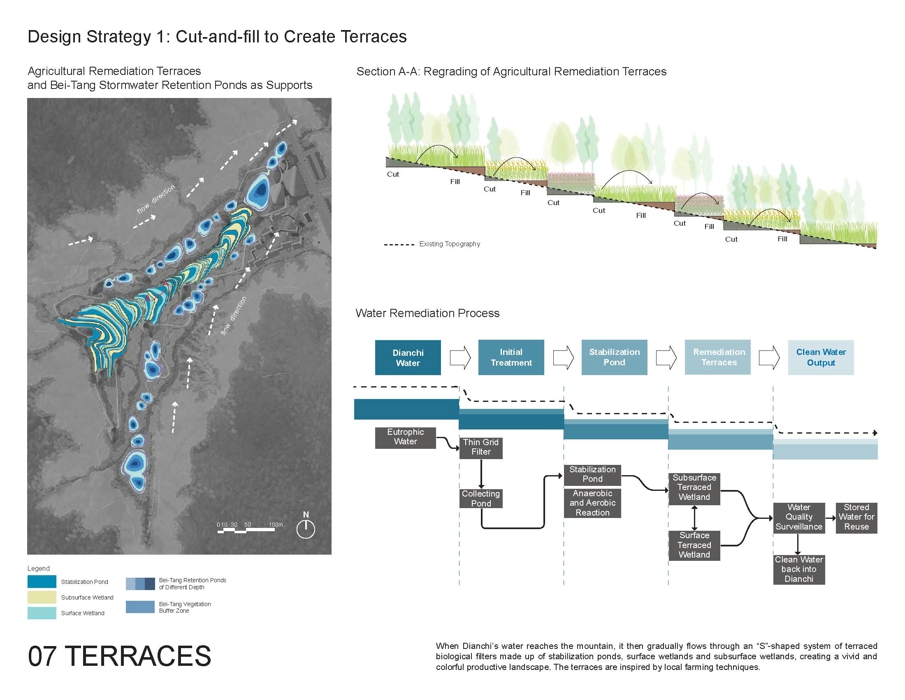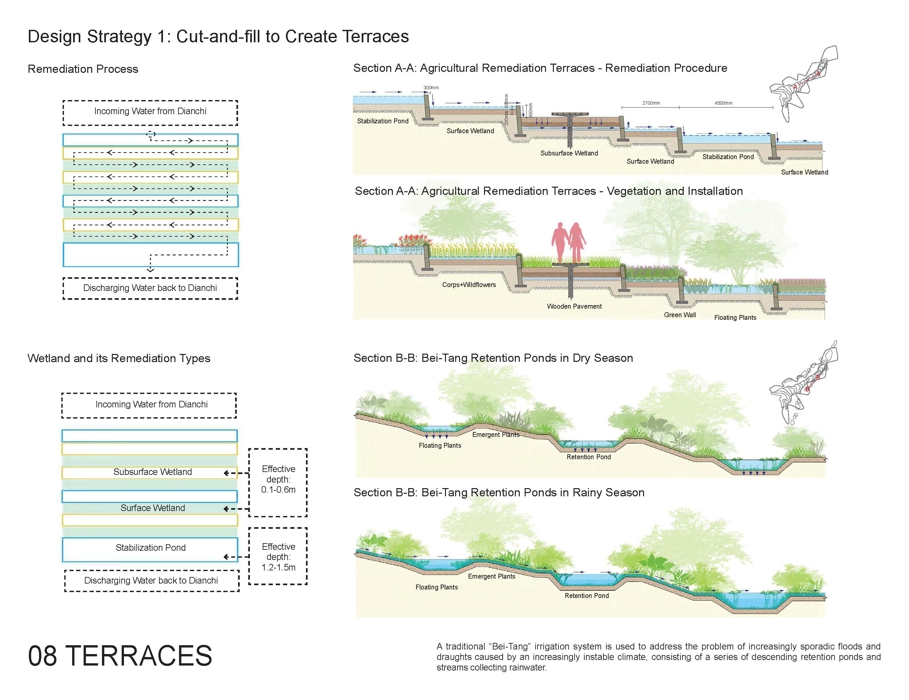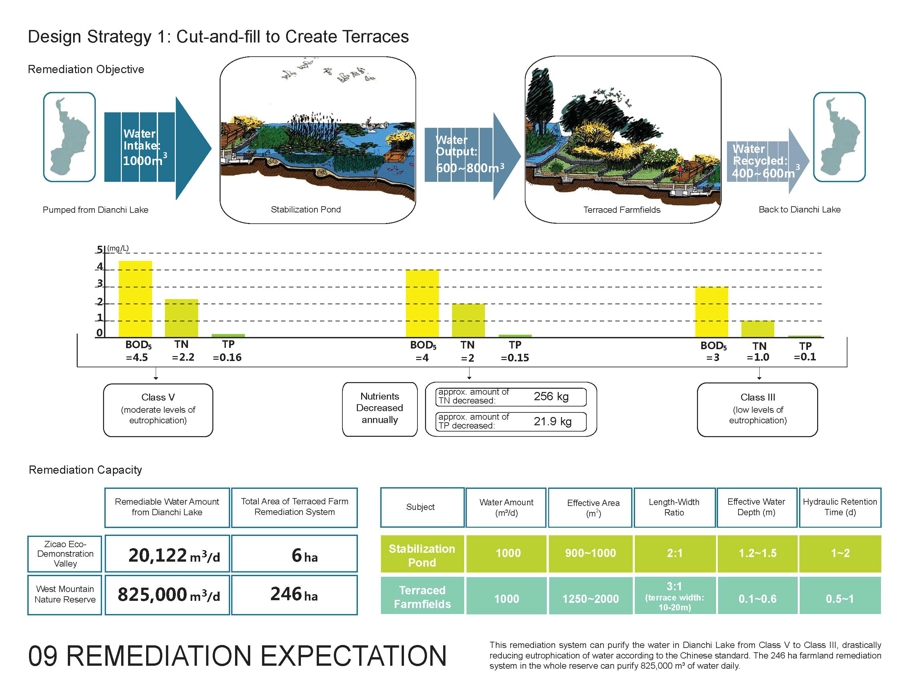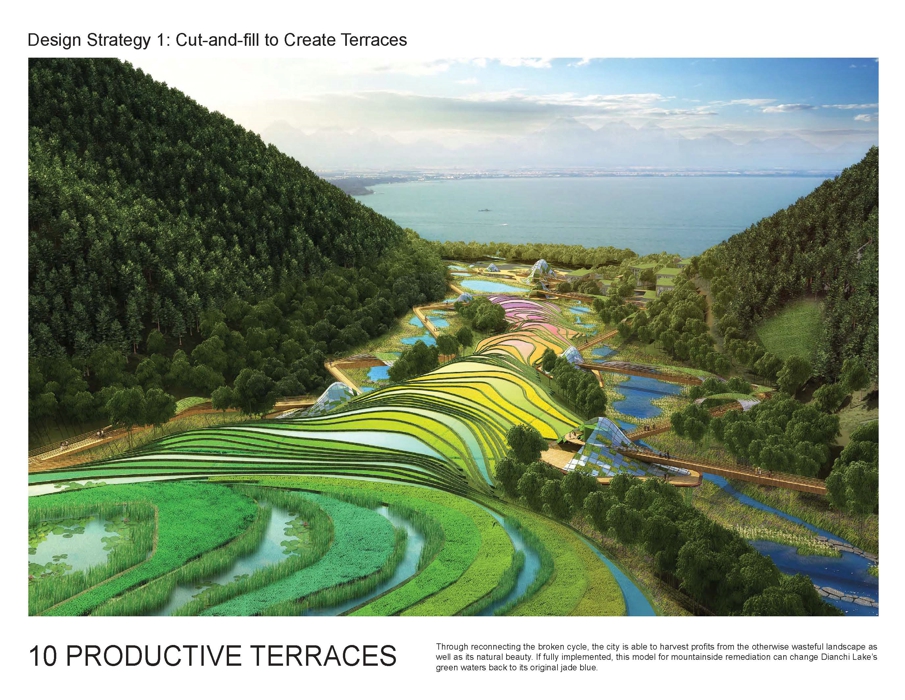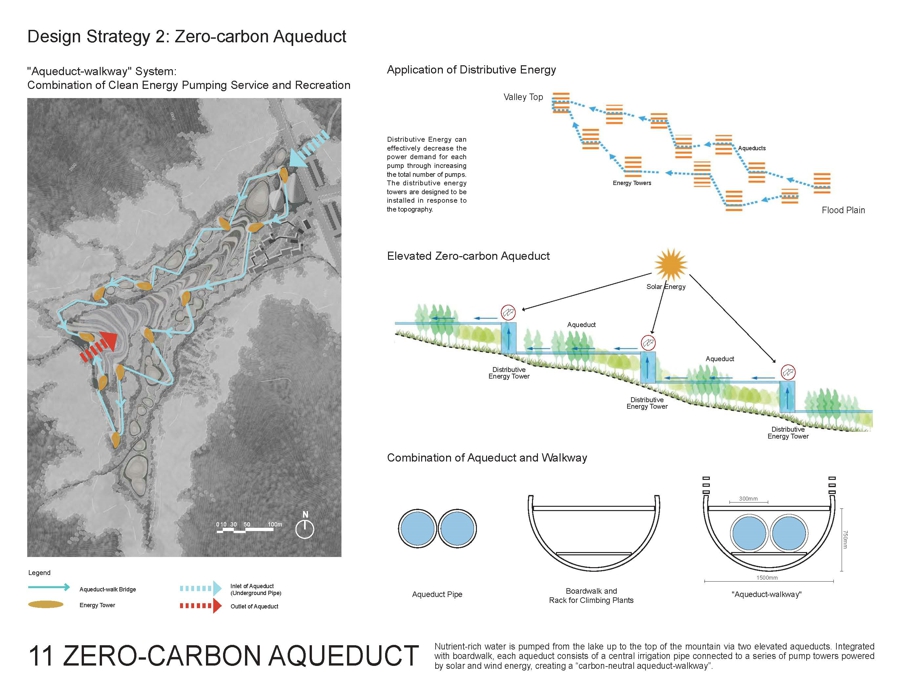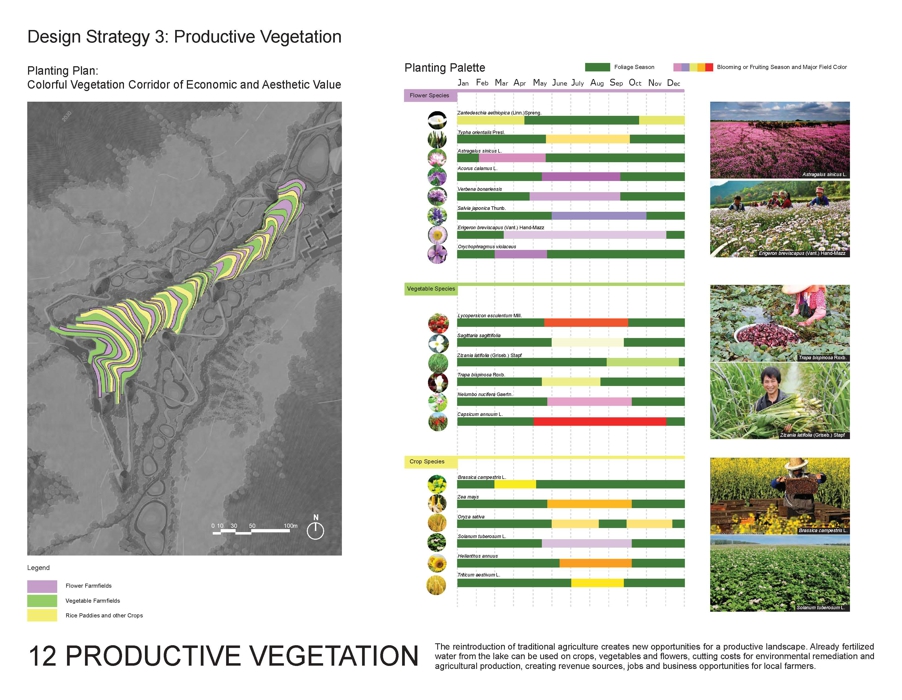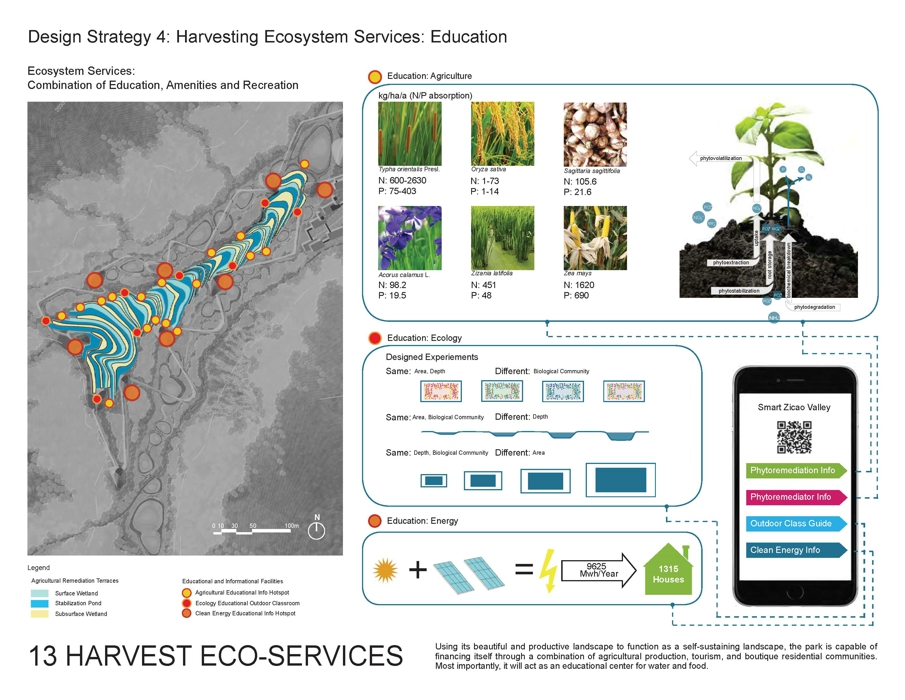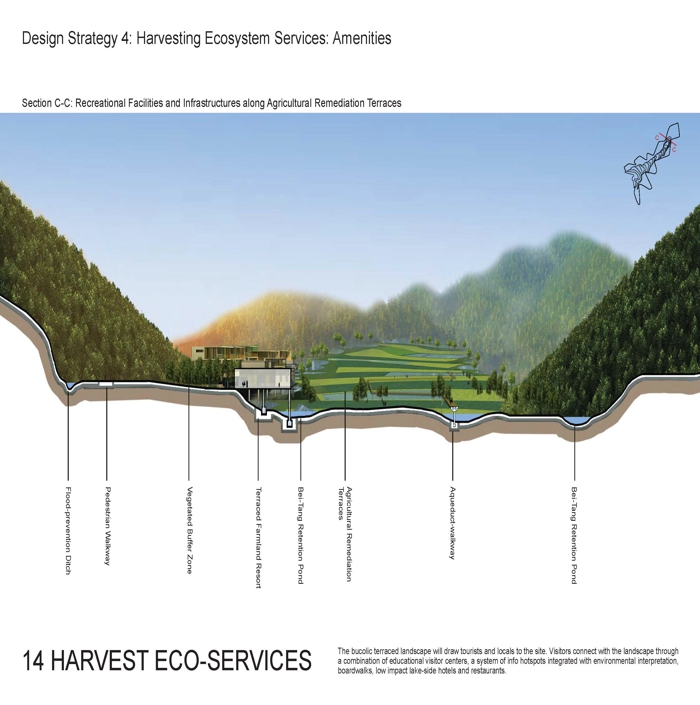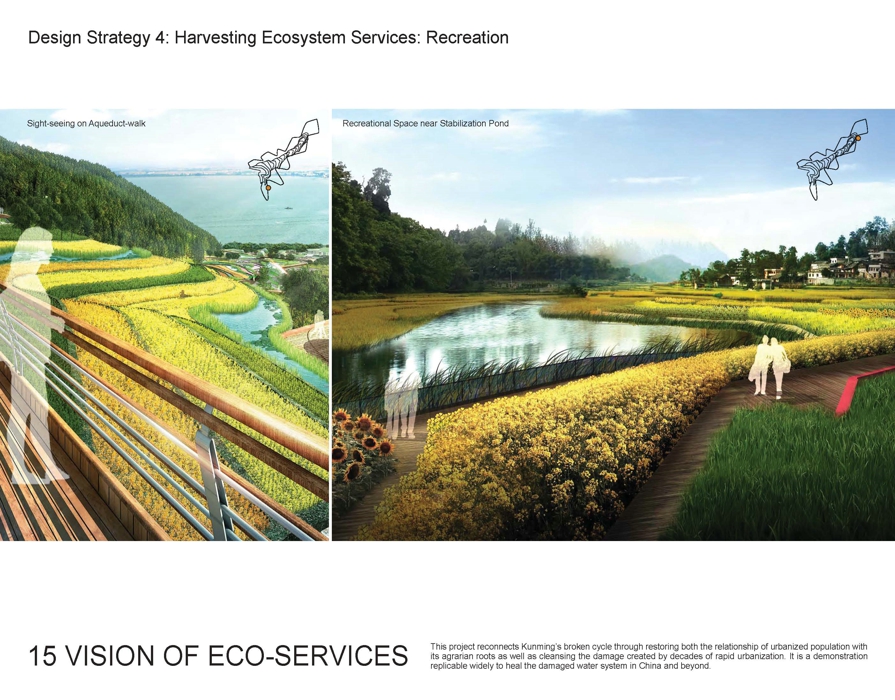Kunming Dianchi West Bank Ecological Infrastructure
Project Information
- Project Location:
- China Kunming, Yunnan
- Project Scale:
- 143 Hectares
- Design Time:
- May 2009
- Build Time:
- July 2010
- Client:
- Kunming Municipal People's Government
Project Profile
1. Project Statement
Over the last half century, Dianchi Lake has seen its natural nutrient cycle destroyed by the growth of chemical based farming along its shores. Fertilizer runoff has saturated the waters with chemical nutrients causing the lake to become eutrophic. As a demonstrative project, Zicao Valley acts as a pilot program for reconnecting the nutrient cycle through harvesting eutrophic lakewater for use in an agricultural landscape, cleansing the water while creating recreational space and tourism revenue for nearby Kunming.
China’s rapid adoption of chemical-based farming have allowed them to increase productivity and profits at the expense of their freshwater lakes and streams. Excessive nutrients from fertilizer run off have caused many water bodies to become eutrophic. Like many lakes in China, Dianchi Lake one of Asia’s largest freshwater lakes, has suffered similar problems. The nutrients, extremely valued in traditional farming, now has reduced the lake to a large green eutrophic waterbody.
The West Mountain Nature Reserve along Dianchi Lake’s western shore have remained largely undeveloped due to its rugged terrain. A potential site to test some innovative solution to passively clean the polluted water by productively harvesting the Nutrients of Dianchi Lake. The 14,352 hectares (35,464 acres) reserve will have eight of its valleys transformed into a 246 hectare terraced agriculture system capable of passively remediating Dianchi Lake’s nutrient saturated water. Zicao Valley, a smaller 14 hectare site within the nature reserve, will act as a demonstration project.
2. Objective and Challenge
The loss of freshwater sources have made lakes like Dianchi an increasingly valuable commodity. In response, China’s national and local level governments are now trying to find ways to remediate these waterbodies. Many have turned to expensive conventional methods which have been successful in reducing pollution from entering the water system, but many have not been successful in removing the excessive nutrients trapped in the lake. Dwindling funding has forced many local governments to search for more economical ways. This project aims to solve the problem by restoring the nutrient cycle of Dianchi Lak, through creating a low cost method to remove the nutrients from the eutrophic lakewater, and creating a financially self-sustaining park, meanwhile make the landscape revive the traditional cycle of organic agriculture.
3. Design Strategy
The solution is a terraced bioremediation system which will absorb excess nutrients, allowing nutrient free water to return to the lake. Crops and flowers grown from this system will be harvested and removed from the cycle. This new cycle will gradually restore the lake to its once natural state. This design ensures that the landscape profitable so that this model can be replicable. Accomplishing this strategy requires the site to function as a public park, capable of attracting development partners to use the land for profit.
The remediation process begins with pumping Dianchi Lake’s nutrient-rich water up the mountain valley and then being released down a terraced corridor, featured with a productive vegetation ranging from rice paddies and crops to Yunnan’s iconic flowers. This procession of colorful terraces can attract visitors who want to learn more about how this productive landscape can clean Dianchi Lake.
When Dianchi’s water reaches the top of the mountain, it then flows through a “S” shaped system of terraces which gradually processes water through biological filters of stabilization ponds, surface wetlands, and subsurface wetlands. The terraces are inspired by Yunnan’s traditional farming technique. A traditional “Bei-Tang” irrigation system is used to address the problem of increasingly sporadic floods and draughts caused by an increasingly instable climate. This system consists of a series of descending retention ponds and streams collecting rainwater.
Nutrient rich water is pumped up to the top of the mountain via two elevated aqueducts, which are integrated with boardwalks. Each aqueduct consists of a central irrigation pipe connected to a series of pump towers powered by solar and wind energy towers, creating a “carbon-neutral aqueduct-walkway”.
The reintroduction of traditional agriculture creates new opportunities. Already fertilized water from Dianchi Lake can be used on crops, vegetables and flowers growing on terraces. The system can purify eutrophic water and avoid introducing additional nutrients, cutting costs for environmental remediation and agricultural production. All the products can be harvested, creating revenue sources, as well as jobs and business opportunities. Wetlands of different depth are designed with unique seasonal crops and blooms, creating a changing agrarian landscape. The designed planting palette encompasses a variety of economic vegetation that are effective at absorbing excessive nutrients. Rice, corn and rapeseed will be used as the major species for planting. For vegetables, tomato, eggplant, pepper, lotus root, water chestnut, and cucumber may all contribute to local delicacies. For the famous local flower industries, lotus, iris, calamus, calla lily, vervain and phlox are all popular exports of the province.
Zicao Valley aims to use its beautiful and productive landscape to function as a self-sustaining landscape, capable of financing itself through a combination of agricultural production, tourism development, and boutique residential communities. Most importantly, it will act as an educational center focused on informing the public about environmentalism and sustainable agriculture. This bucolic terraced landscape will draw tourists and locals to the site. Two central boardwalks are integrated with the aqueduct systems to allow visitors to ascend mountain along with the water, allowing them to understand how Dianchi’s water is delivered to the park through a zero-carbon system. A series of smaller boardwalks cross through the terraced corridor takes visitors back down the site to the lake, giving them a firsthand view of park’s bioremediation process and the cleaned water it creates. A system of pavilions integrated with an environmental interpretation, creating an educational landscape. The environment created by the agrarian aesthetic can creates an opportunity to attract tourist to stay in one of several low impact lakeshore hotels and dine at restaurants featuring product grown on-site.
4. Conclusion
In this project, the combination of creating a productive landscape and integrating basic tourism amenities creates a landscape that both cleanses Dianchi Lake while educating and bringing Kunming’s growing urban populace back to their natural roots. Through reconnecting the broken cycle, both the government and public are able to harvest profits from the otherwise wasteful landscape as well as treasure its natural beauty. If fully implemented, this model for mountainside remediation could change Dianchi Lake’s green waters back to its original shade of blue.
